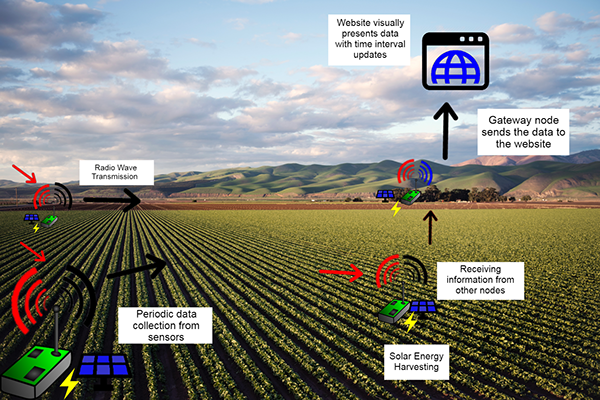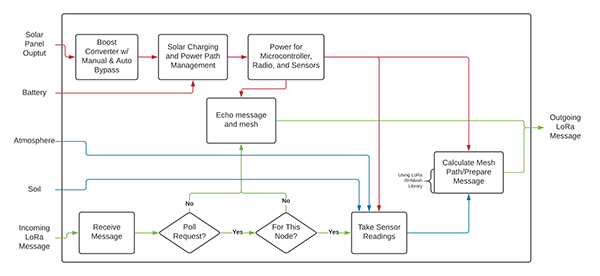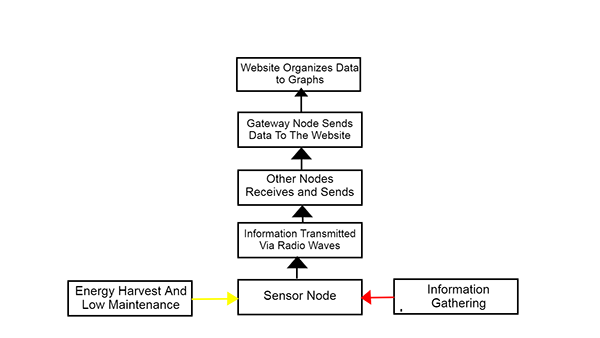
Functional Overview
Our design has a hierarchy approach to nodes with closer communication paths than those more remote in the network.

Self sustaining in nature for a calendar year
The independant Nodes can to be sustanable without maintenence for at least 1 calendar year.

Self Healing Mesh Communication
This network is self-healing, and with our self-reporting design, users get notifications about possible broken nodes in the network. The network will also continue to function if there is an available path back to the gateway node.

Voltage Step System
This design choice enables the solar recapture system to charge the battery in low light conditions constantly. This design allows each node to safely switch power sources depending on the level of sunlight reflecting off the panels.
Intro Video
Here is a summary video that explains a little more about the product and it's impact.